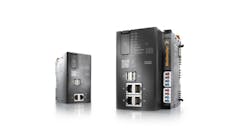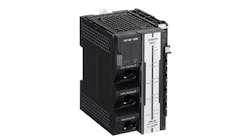Stan: To get insights on what flow sensor works best in various applications we continue our interview with Ram Ramachandran the principal engineer at Systems Research Int'l. Inc.
Differential head measurements using differential pressure [DP] transmitters tend to have the lowest accuracy and rangeability due to the square root relationship; the highest noise due to sensitivity to velocity profile, and the highest maintenance cost due to impulse lines. If the velocity profile and density are constant (no opening and closing of valves or changes in composition), the repeatability is good. While the hardware cost may be low, the lifecycle cost is high from installation and winterization of impulse lines and maintenance to prevent line plugging, and to keep a constant phase and fluid composition in the lines. Furthermore, the increased process variability is a hidden cost. Most people don't realize density affects even the volumetric flow through the Bernoulli equation. Then there is the poor turndown leading to loss of flexible manufacturing to minimize inventories, and match fluctuating energy costs and market demands. I stopped using them [differential head measurements] in the 1980s. Why are differential head meters used?
Ram: Many of these installations are legacy systems, still with us in large chemical plants and refineries in the United States. For high temperatures and large pipe lines in mature continuous processes (e.g., refining, chemical intermediates and pigments and dye manufacturing) with infrequent and relatively limited production rate changes, the differential head meters have been traditionally used. Elbow flowmeters with purged taps have been used when the process fluid is too hazardous, too corrosive or erosive, or pressure drop can't be tolerated, and the accuracy required is only 5%. For much better accuracy and rangeability and less noise and sensitivity to piping configuration, Venturi tubes can be used with a minimal permanent pressure drop. Flow nozzles are a lower cost solution to Venturi tubes, particularly for large lines. The lowest cost flow sensor is an averaging pitot tube. Some manufacturers offer a retractable design.
Greg: If a wireless DP transmitter is used with an averaging pitot tube, the flow measurement is portable, enabling the exploring and prototyping of process control improvements, diagnostics and metrics. The rangeability can be extended to 10:1 if a second low-range transmitter is added, and measurement noise is incredibly low from strict attention to piping straight run requirements. These meters can justify a more permanent and accurate installation.
Stan: What can you do to achieve greater accuracy, rangeability and maintainability in large lines?
Ram: Turbine meters can provide incredible accuracy (e.g. 0.05%) and rangeability (e.g. 50:1). Bearing life is a problem for non-self-lubricating liquids, such as anhydrous ammonia. EMI has a sleeve bearing design that enables use in steam and gases. Insertion turbine meters and vortex meters are used for large pipelines. Vortex meters are the lower maintenance alternative, but at the expense of 5x deterioration in accuracy (e.g. 0.25%) and rangeability (e.g. 10:1) and greater straight run requirements. Repeatability stops at low flow. Improvements in bluff body and sensor design and temperature compensation have greatly increased vortex meter performance since their introduction. However, the meter coefficient is a still a function of kinematic viscosity.
Greg: Where is volumetric displacement used for flow measurement?
Ram: The oil and gas industry uses the technology of pulsating disc flowmeters for their huge pipe lines. The measurement of reciprocating pump stroke is used for toxic and lethal fluid flow measurement. Rotating disc flowmeters are used for natural gas and water flow measurement. Since these tend to read low as they age, there is an initiative to replace these with non-mechanical meters for large users.
Stan: Magmeters offer quite a performance advantage at low flows since their accuracy is a percentage of rate rather than a percentage of full scale like most other flowmeters. Magmeters also have a very short straight run requirement and can measure reverse flow. What do you see as some of the application considerations?
[pullquote]Ram: The main consideration is materials of construction and fluid conductivity. While newer meters have special low-conductivity capability, still some amount of water must be present. Oil companies will not entertain the possible use of magmeters due to previous failures.
There have been some spectacular failures of soft liners (e.g. Teflon) collapsing from a vacuum condition from condensation after steam cleaning or from tearing away from the wall due to poor liner installation. Thompson Equipment perfected the art of lining magmeters and is the choice for many manufacturers. For hot, dilute HCL glas-lined magmeters are used. Electrodes are available in a wide variety of corrosion-resistant materials, including gold and platinum.
AC magmeters had some initial problems when first introduced, but now predominate because of lower drift and less of an effect of solids. For huge changes in conductivity, a DC magmeter may be used.
Greg: My personal favorite is the Coriolis meter because it has no drift or installation effects (other than vibration), incredible accuracy (e.g. 0.02%) and rangeability (e.g. 100:1) independent of composition and velocity profile, low noise, no calibration or maintenance, plus an extremely accurate density measurement that can offer an inferential measurement of concentration or percent gas or solids. Coriolis is the only true mass flow measurement. For liquid reactant feed measurement and ratio control, Coriolis meters are essential. Why isn't a Coriolis meter used?
Ram: The meter is expensive, particularly in large pipe sizes. The largest size is presently about 16 inches, but at quite a price. For slurries there must be no accumulation of solids. Straight-tube Coriolis meters are used to prevent erosion at a price of a 5x reduction in accuracy (e.g. 0.1%).
Stan: What about the measurement of flow in ducts?
Ram: Thermal gas flowmeters are predominantly used to measure refinery waste gas flow consisting of mostly ethane and methane. It is also common in material and energy balance controls in large furnaces by measuring air duct flow. Many of the emission reports to regulatory authorities are indirectly computed for total emission, based on plant throughput wherein air/gas flow measurements become critical besides direct composition analysis of stacks.
Greg: Thermal gas flowmeters depend on the thermal conductivity being constant. They are extensively used for measuring air, oxygen and carbon dioxide flow to bioreactors. For bench top and pilot-plant scale bioreactors, these flowmeters are integrated with a internal flow element and PID controller to become a mass flow controller (MFC) that gets its flow setpoint from the bioreactor control system. The tuning of these MFCs can be made fast enough to insure speed as a secondary loop is 5x faster than the primary dissolved oxygen or pH loop. What are some low-cost alternatives?
Ram: Fluidic Components Inc.'s flowmeters that measure the heat loss have a better accuracy and rangeability than thermal mass flowmeters, particularly if the stream has moisture. Two heaters are used to prevent condensation.
Stan: What is done for the flow measurement of solids?
Ram: The most accurate measurement of conveyor flow is by gravimetric feeders that are separate, specially designed sections of conveyors on load cells to measure speed and weight. Linear voltage differential transmitters (LVDT) offer an economical and fairly repeatable solution. Ultrasonic sensors are also used. Radiation sensors are more accurate than LVDT or ultrasonic, but require wipe testing every three years and permitting for maintenance by a radiation officer.
Flow out of a hopper is measured by a rotary valve in the hopper discharge. Measuring hoppers may be used at several points in a fluidized solids process, such as spar in hydrofluoric acid (HF) manufacturing. The same technique is used for cement kilns and bagging operations.
Greg: Flow can be computed from the rate of change in weight by load cells or level by radar as described last month. Centrifugal pump speed with temperature measurements for viscosity and pressure measurements for rise compensation have been used for computing polymer flow. A valve-flow model for equal percentage trim and a large valve to system drop ratio can extend the turndown of differential head and vortex meters, but should not be viewed as a replacement for flow measurements due to effects of shaft windup, backlash, stiction, composition and geometry.
Stan: How do you measure extremely low flow rates?
Ram: Coriolis meters as small as 1/8 in. are available. For even lower flows, capillary flowmeters with a DP measurement are used, keeping the system in temperature-controlled baths. Very small flow with high accuracy and resolution is achieved by using special turbine meters in pilot plants to measure 1 cc to 5 cc an hour or smaller.
Greg: Bench top bioreactors use peristaltic pumps for feeding seed cultures, amino acids, nutrients, reagents and glucose. The speed provides a volumetric flow measurement. If the choices seem too confusing, here is list of excuses to write the whole thing off.
Top 10 Reasons Not to Use Flow Measurements
10. Minimizing project costs are more important than minimizing operating costs.
9. Adaptive control will take care of everything.
8. I don't really want to know what the control valve is doing.
7. I want to do an academic paper on valve flow models.
6. I love process mysteries.
5. I don't want to disturb disturbances.
4. Operators say they don't change feed rates.
3. Feed-forward control is too complicated.
2. Online process metrics might show our mistakes.
1. We know the flows from the process flow diagram







